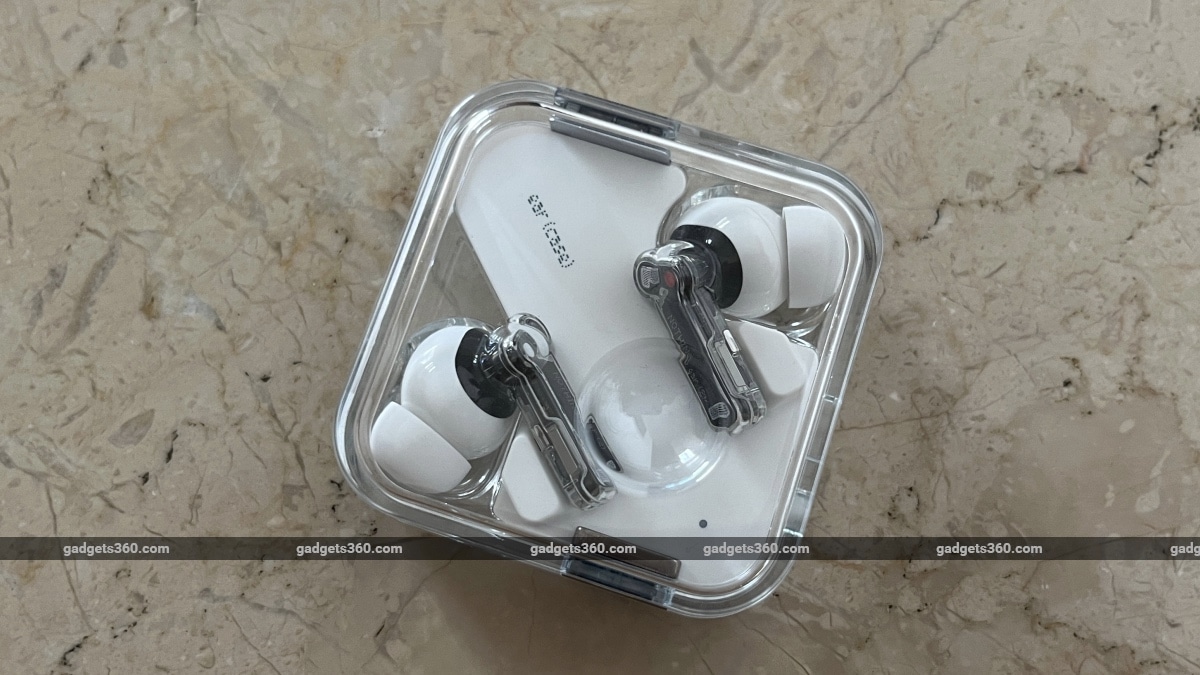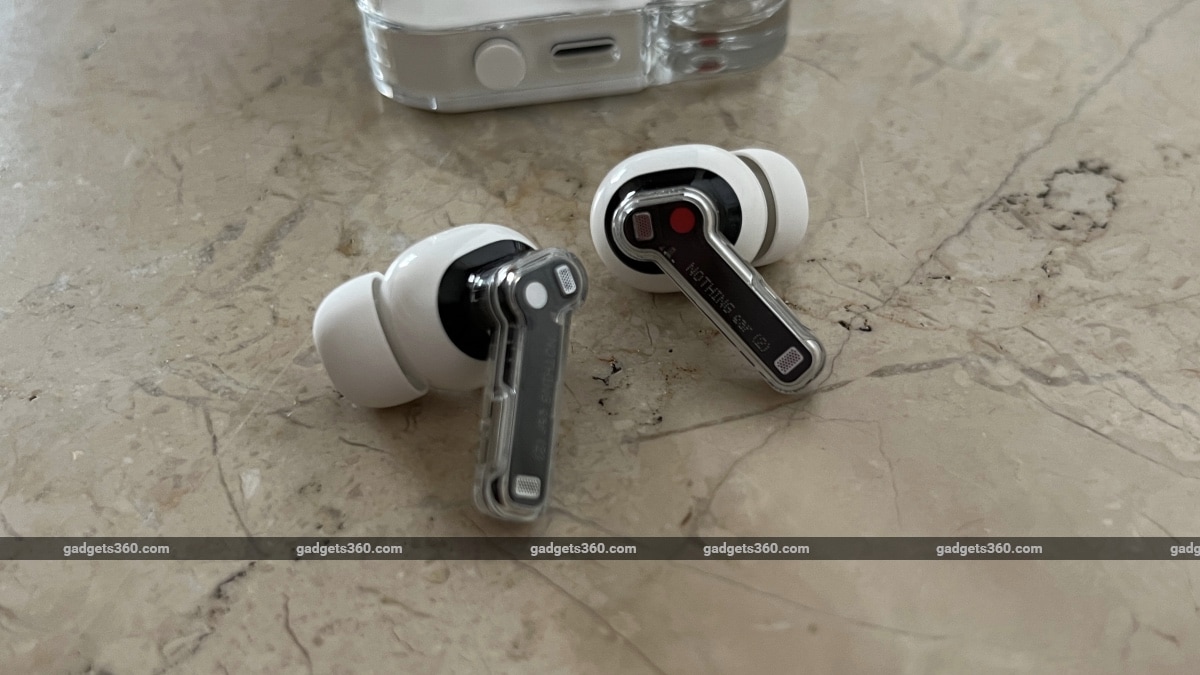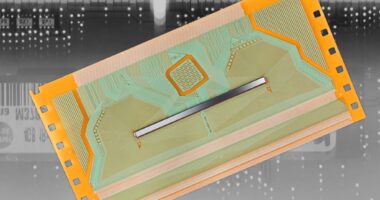Even though its name might lead to a lot of jokes and puns, Nothing has done pretty well as a tech company in the short time it has been around. It’s also good that the company’s product line has grown steadily since 2021 when it released the decent Nothing Ear 1 true wireless earphones.
Now, after releasing a few other products, including its first smartphone, the company is releasing its first-ever second-generation product, the Nothing Ear 2, which is a big step up from its first version.
The Nothing Ear 2 costs Rs. 9,999 in India and claims to be a big step up from the Ear 1. It will support the LHDC Bluetooth codec and give you a better app experience. The Nothing Ear 2 is up against strong competition from names like OnePlus and Jabra. Is it the best true wireless headset you can buy right now for less than Rs. 10,000? Read this article to find out.
Nothing Ear 2 Design and Features
The daring and one-of-a-kind design of the Nothing Ear 1 was pretty cool back in 2021, and it still looks good on the Nothing Ear 2 even though it’s not new anymore. At first view, this new headset looks a lot like the old one.
The only thing that makes them different is the name “NOTHING ear (2)” written on the stem of each earpiece. I think it’s smart to stick with this style, since it’s still as eye-catching as it was before.
At the moment, the Nothing Ear 2 only comes in one color, which is clear and white. Unlike the Nothing Ear Stick, the Ear 2 fits properly in the ear canal. This makes sure that there is a good seal and passive noise isolation, which is needed for active noise reduction to work.
The controls have also changed a lot. Instead of taps, they now use a force-touch method, like the AirPods Pro (2nd Gen) and OnePlus Buds Pro 2. I’ve said it before and I’ll say it again: this is a lot better and more accurate than simple touch settings.
Usefully, you can also change how these controls work through the companion app. You can choose to handle playback and volume, call up the voice assistant, and switch between ANC and transparency modes.
The earpieces also have in-ear detection to automatically play and pause music when put on or taken off, but this didn’t work very well during my review, and I found it easier to manually play and pause music as required.
Aside from this, the Nothing Ear 2 earpieces are rated IP54 for dust and water protection, while the charging case is rated IP55. Both are good enough to handle splashes of water and a little bit of dirt.
Each earpiece has three mics that work together to help with ANC and voice. The Nothing Ear 2 comes with a USB Type-C to Type-C charging cable and three pairs of plastic ear tips in different sizes.
The Nothing Ear 2’s charging case is clearly smaller than that of the Ear 1, and it only holds 485mAh of power. But nothing says that this is made up for by optimizations and better battery life on the earpieces, so the total battery life is the same.
I’ll talk more about the battery life later in this review, but this case is a lot easier to carry and fit in your pocket. There is also Qi wireless charging (up to 2.5W), and you can always charge with a normal USB Type-C cord.
Nothing Ear 2 App and Specifications
The Nothing Ear 2 has the same 11.6mm dynamic drivers as its original, but the Bluetooth connection on the new headset is much better. The Ear 2 uses Bluetooth 5.3 and supports the SBC, AAC, and LHDC Bluetooth codecs. Useful features include support for Google Fast Pair, Microsoft Swift Pair, and multipoint connection for up to two audio sources at the same time.
LHDC is a 24-bit advanced codec that lets the headset get more audio data from a source device that is compatible with it. This makes the sound quality better. This codec is only available on a few Android devices right now, and I could only get it to work on the Nothing Phone 1 (Review).
Even though the OnePlus 9 Pro supports the LHDC codec, I couldn’t use it. Instead, I could only use the AAC codec, even though I turned on the choice in the app and in the phone’s developer settings. If you want to use the Nothing Ear 2 with an iPhone, you can only use the AAC codec. This did have an effect on the sound quality, which I’ll talk about in more depth in a bit.
The Nothing X app, which is available for iOS and Android, is the key to getting the most out of the Nothing Ear 2 headset. With it, you can change settings, personalize the headset, and make other changes.
If you use this headset with the Nothing Phone 1, you can do most of the core functions of the app through the phone’s user interface. For example, you can check the power level, turn on and off ANC mode, change the equalizer settings, and change the gesture controls.
Strangely, though, you can only use the Nothing X app to do things like turn on a multipoint connection.
The app is well-made and has a lot of useful features, such as the ability to set equalizer presets, change the amount of ANC intensity, and make separate profiles for the sound and ANC. There is a lot to read, but it’s worth the time because it helps you set up the headset the way you want.
Nothing Ear 2 Performance and Battery Life
Now, ecosystem benefits are very important, and many companies are following Apple and Samsung’s lead by making goods that work well with each other. Since Nothing’s founder, Carl Pei, also co-founded OnePlus, it makes sense that their ideas are similar.
You can see some of these ideas in how the Nothing Ear 2 works with the Nothing Phone 1. In fact, using the two devices together is the best way to get the most out of them and use all of their features.
Still, if you pair the Nothing Ear 2 with almost any other smartphone, you’ll get a pretty complete experience. One of these is the powerful LHDC codec, which I could only use with the Nothing Phone 1.
The sound quality is better when this codec is used. LHDC is technically compatible with a number of other devices, but it may be hard to get it to work based on the versions of those devices.
Using the Nothing Phone 1 as my source device and streaming high-resolution songs from Apple Music was quite amazing, especially since this is a Rs. 10,000 true wireless headset. Even though I didn’t like the sound at first, I found that the default equalizer preset boosted the bass. Changing to the Balanced preset, which is the Nothing Ear 2’s natural sound profile, made a huge difference in sound quality and fidelity.
When I listened to Frenchfire’s “Lavender (Star One Remix),” Nothing Ear 2 was able to keep up with the dance song’s fast, progressive start, with its quick changes and sudden bass hit.
Some of its high-frequency computer parts sounded clear and sharp, and the whole track had a strong sense of direction that gave the soundstage a lot of charm.
The clean sound of the low, catchy beat went well with the busy details. When the Nothing Ear 2 was paired with a different smartphone that used the AAC codec, the same song almost sounded as good, at least in terms of how well-balanced and useful the sound was.
But when the LHDC codec was used, the amount of detail and the extensions sounded a bit more clear and more striking.
During most of my review, I had active noise cancellation turned on, and there were times when I wasn’t sure if it was really on. Some songs, like “E Samba” by Junior Jack, had a very open and wide soundstage and image. I almost thought I had turned the Nothing Ear 2’s “transparency” mode on by accident.
Everything sounded better when I turned up the volume, and I found that going past 90 percent gave the best sound in terms of detail and punch.
Still, the level of detail and the deep punch in the lows got old quickly at such a high volume, so I had to turn it down to a more acceptable level. Even at 50 percent, the sound was still fun to listen to, which is a good thing.
The Nothing Ear 2’s active noise canceling is fine for a headset that costs less than Rs. 10,000, but it’s not great by any means. Both inside and outside, the sound reduction wasn’t very good.
For example, you could still hear the spinning of a ceiling fan and the hum of an air conditioner. This was paired with a strong vacuum effect from the ANC, which many people might think is a sign of good noise cancellation when it’s actually the opposite.
The Nothing Ear 2 does block out enough noise to make it easier to hear even at modest volumes, and the good soundstage might be able to make you forget about the unsettling feeling of the vacuum effect.
Transparency mode did what it was supposed to do pretty well, but the extra volume can get annoying after a while, and you might just want to take off your earphones.
The Nothing Ear 2 has the same battery life as the Nothing Ear 1. When ANC was turned on, the earpieces ran for about four hours on a single charge.
The charging case added a little more than four more charges, making the total runtime around 22 hours per charge cycle. Given that the charging case is smaller, this is a good number overall, and you can get a lot more out of it if you turn off ANC.
Verdict
Even though the company finally changed the price to a little over Rs. 7,000, the launch price of Rs. 5,999 for the Nothing Ear 1 was very impressive.
The Nothing Ear 2, on the other hand, doesn’t have a shockingly low price, and it doesn’t even need to. At Rs. 9,999, it’s a good pair of true wireless earphones that feels about right.
It competes with headphones like the Oppo Enco X2 and the OnePlus Buds Pro 2, which are a bit more expensive, but it still sounds good and works well overall. The only problem might be that it takes a Nothing Phone to work well, especially if you want to use the LHDC Bluetooth codec.
Still, it’s a nice-looking pair of headphones that works pretty well with other source devices, so if you have Rs. 10,000 to spend, you should think about getting it.
Read More:
Lava Yuva 2 Pro Review: An Entry-Level Smartphone With A Focus on Design
How to Prevent iPhone Thieves from Locking You Out Of Your Own Device
The Pixel Fold from Google Is Real! the First-Ever Live Video Comes out













